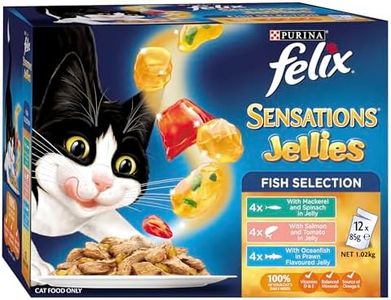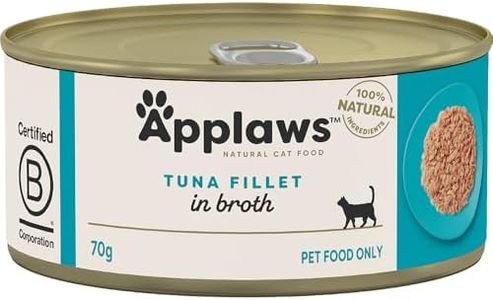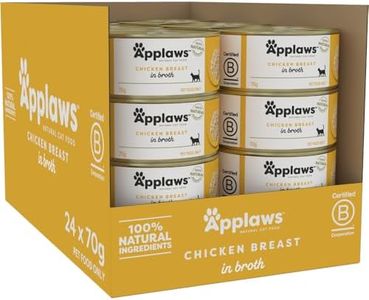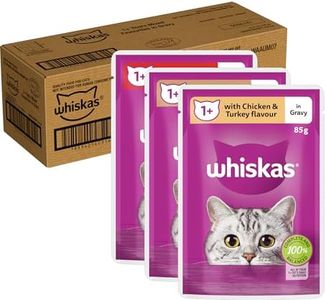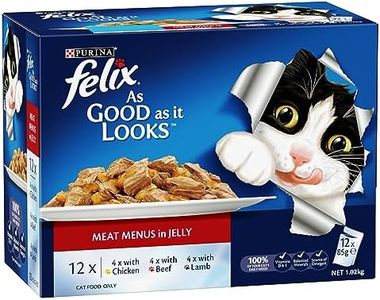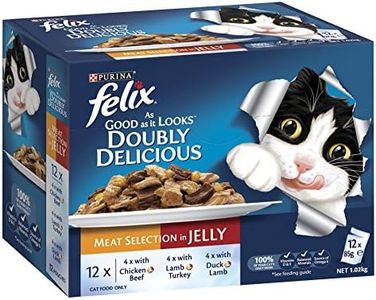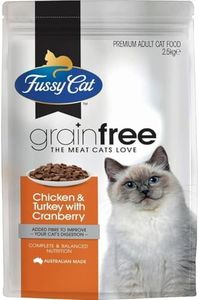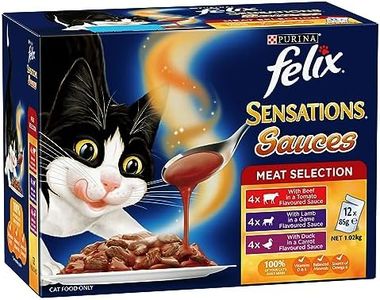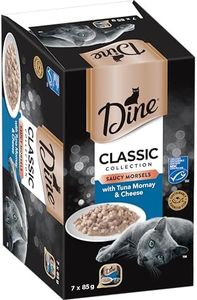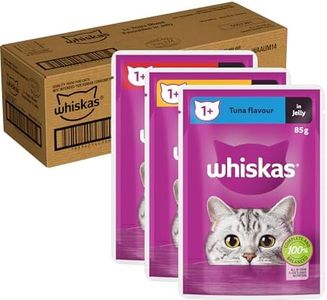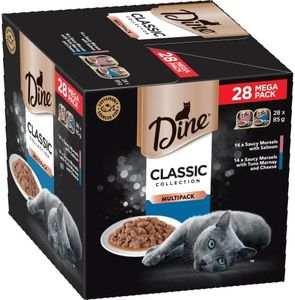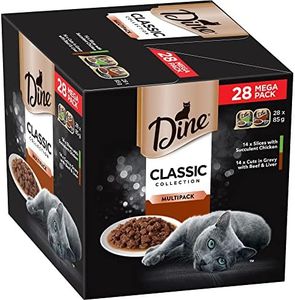We Use CookiesWe use cookies to enhance the security, performance,
functionality and for analytical and promotional activities. By continuing to browse this site you
are agreeing to our privacy policy
10 Best Cat Foods
From leading brands and best sellers available on the web.Buying Guide for the Best Cat Foods
Choosing the right cat food is essential for your cat's overall health, energy, and happiness. There are countless options out there, and it's important to pick one that fits your cat's life stage, dietary needs, and personal preferences. When making a choice, always read the labels and consult your veterinarian with any special health concerns your cat might have.Type of Food (Dry, Wet, Semi-Moist)Cat food generally comes in three forms: dry (kibble), wet (canned), and semi-moist. Dry food is convenient and helps with dental health, but wet food has a higher moisture content which is good if your cat doesn't drink much water. Semi-moist is less common and often has more preservatives. If your cat is picky or has trouble chewing, wet food might be better. For cats that need help with hydration, including some wet food can be important. You can also mix types to balance benefits.
Life Stage (Kitten, Adult, Senior)Cats have different nutritional needs depending on their age. Kitten foods contain more calories, protein, and nutrients for growth, while adult cat foods support maintenance, and senior formulas often have fewer calories and added nutrients to support joints and organs. Always feed according to your cat’s life stage for the best health outcomes.
Protein SourceCats are obligate carnivores, which means they need animal-based proteins to thrive. Read the ingredient list to see if real meat (chicken, beef, fish, etc.) is listed as the first ingredient. Foods with mostly fillers or plant proteins are not as suitable. If your cat has allergies or sensitivities, you may need to pick a formula with a specific or novel protein.
Grain-Free vs. With GrainsSome cat foods are grain-free, while others contain grains like corn, wheat, or rice. Most cats can digest cooked grains, but cats with allergies, sensitivities, or certain digestive issues may benefit from grain-free food. Always consult your vet if you’re unsure, since grain-free isn’t always necessary for healthy cats.
Nutritional Completeness (AAFCO Statement)Look for a statement on the packaging that says the food meets the nutritional levels established by AAFCO for your cat’s life stage. This means the food is complete and balanced and provides all the nutrients your cat needs. Avoid foods labeled only as 'intended for intermittent or supplemental feeding' unless part of a varied diet recommended by your vet.
Special Formulas (Indoor, Hairball, Sensitive Stomach, etc.)Special formulas exist for cats with certain needs, such as indoor cats (lower caloric needs), cats prone to hairballs, or cats with sensitive stomachs. These can be helpful if your cat has particular issues, but for many cats, a standard formula is enough. Use special formulas if your cat shows signs of needing extra help in one of these areas.
Additives and PreservativesSome cat foods contain artificial colors, flavors, or preservatives, while others use natural alternatives. If your cat is healthy and not sensitive to additives, this may not be a concern, but many people prefer foods with fewer and more natural ingredients to reduce the risk of reactions and promote natural health.
